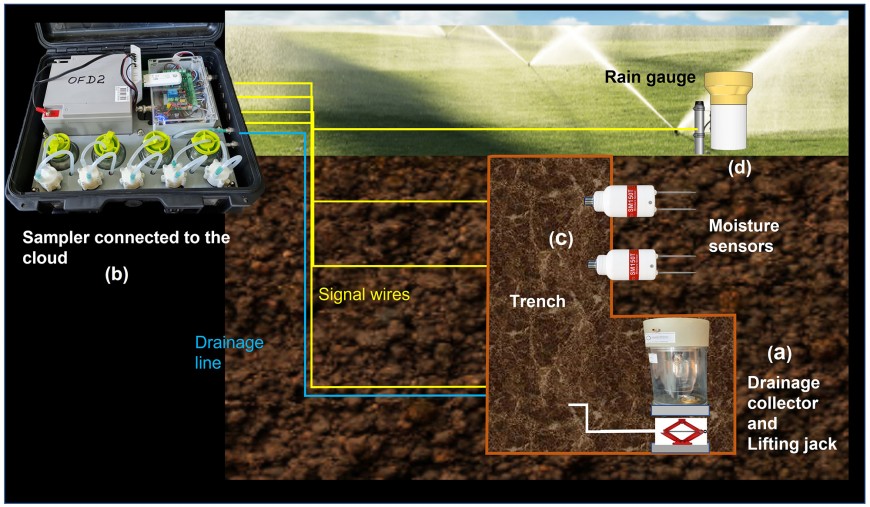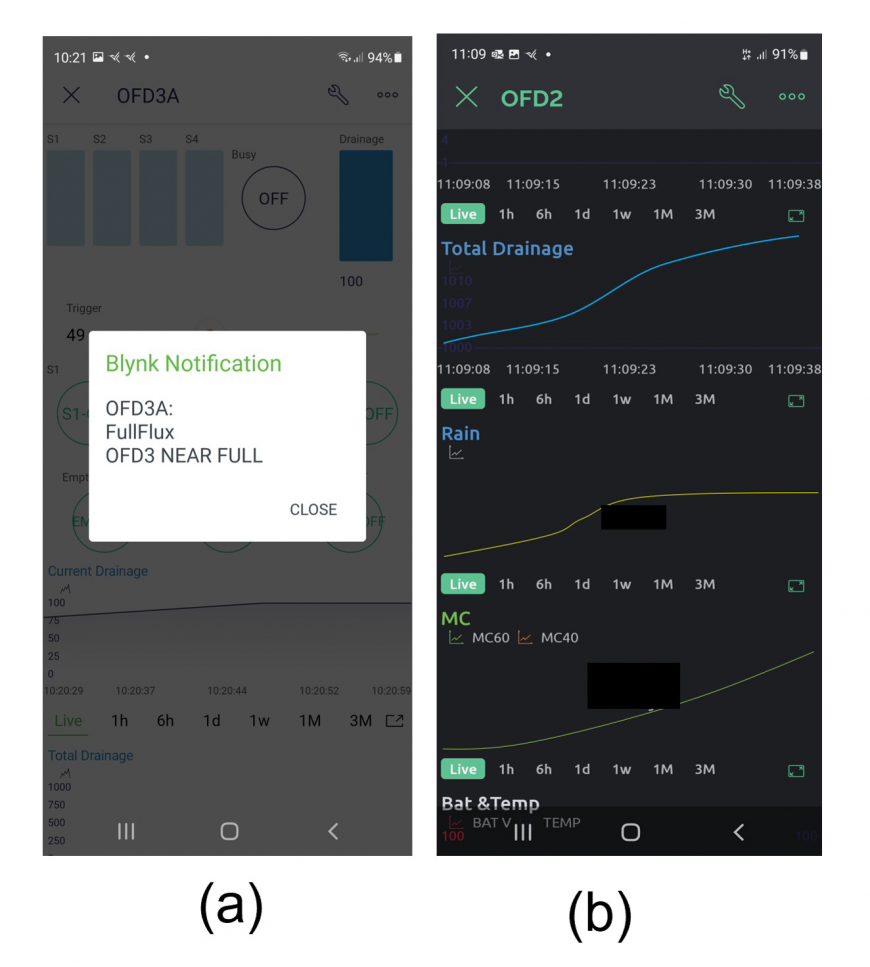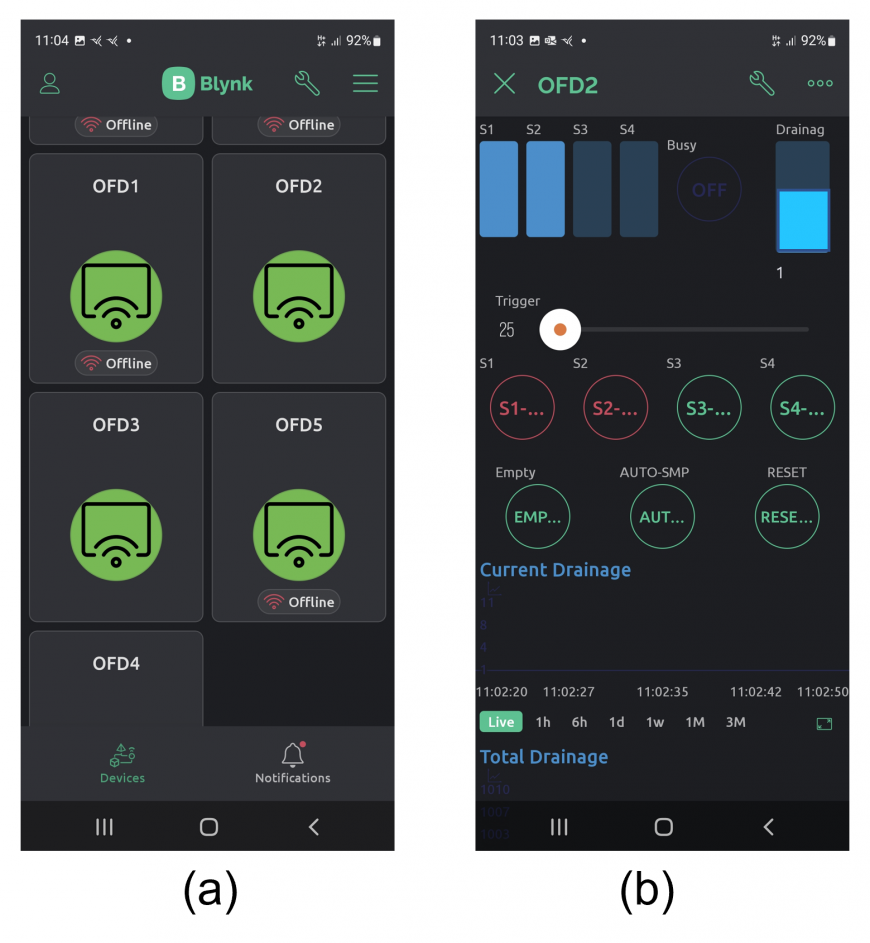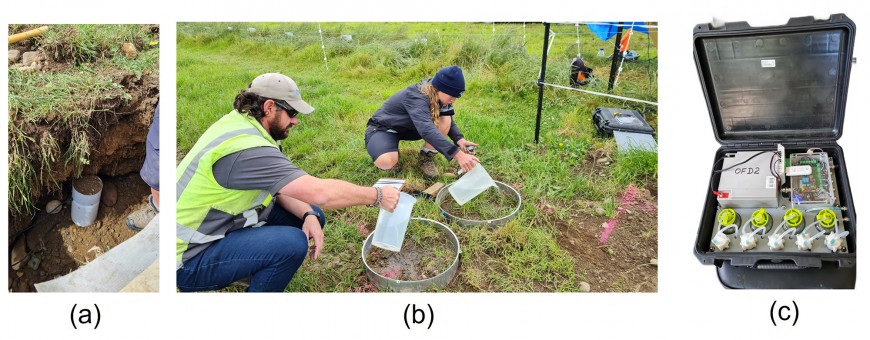Sampling event-based drainage in near real time using drainage fluxmeters
Knowledge of event-based drainage from different parts of a catchment could help identify possible sources of diffuse pollution to groundwater. If catchments and farms have varying soil types, better information on soil drainage water quality could allow farmers to improve aspects of farm management, for example, improving irrigation scheduling to maximise irrigation efficiency, while aiming to minimise ground water pollution.
Manaaki Whenua has developed a new technology to sample event-based drainage using drainage fluxmeters. The primary purpose of the drainage fluxmeter network is to allow farmers and regulatory authorities to better understand soil water leaching caused by irrigation, effluent application, and rainfall.
Measuring drainage from different soil types (areas) on a farm in near real time is useful to help understand spatial variation of drainage events and solute movement. Such information can then be used to help farmers minimise ground water pollution and efficiently manage limited water resources. It will also allow regional authorities to improve guidelines regulating freshwater and nutrient application.

Figure 1 Parts of the MWLR drainage fluxmeter and other components at the site
The essential parts of the MWLR Drainage Fluxmeters are described below and shown in Figure 1. These parts are used in conjunction with soil moisture sensors and a rain gauge to improve data collected and later interpretation. An aim of this design was to reduce the likelihood of sample contamination between events:
- The drainage collector collects drainage using a wick and measures the quantity using a load cell. The weighing system can go under water without causing any damage to the load cell. The collector is pushed into soil using a mechanical car jack.
- The sampler has four sample bottles. Water samples are pumped from the drainage collector to the sample bottles using four self-priming micro-pumps.
- The soil moisture sensors are used to measure the time-varying soil moisture profiles leading to the drainage, to develop and calibrate numerical drainage models.
- The rain gauge measures the irrigation and rainfall using a traditional tipping spoon mechanism.
The drainage fluxmeters are being commercialised by Onfarm Data Ltd and will soon be available for research or for farmers to use on their farms.
To ensure the water quality information, and subsequent load estimates, are suitable and robust for their needs, users would need to consider several factors, such as soil, sufficient replicate samplers needed, and data interpretation.
For easy use of the fluxmeter, smart phone and web apps have also been developed. Web dashboard and smart phone apps were developed to monitor and control drainage fluxmeters, as shown in Figure 2. The entire sampling could be automated by setting a threshold volume to trigger a sampling event, reducing the need for users to manually or digitally monitor the drainage collector to collect drainage samples. All authorised users who have access to a fluxmeter’s login will receive notifications when a drainage collector reaches the pre-set threshold capacity. Although all users can monitor activities of the drainage fluxmeters, only authorised personnel can operate sample collection by tapping on the relevant sampling button on the smartphone interface. When a sample collection is completed, the remaining drainage will be discarded to prevent contamination between events.

Figure 2 (a) users are notified when the flux collector is nearly full so they can decide to sample from the event. (b) Time series data of total drainage, rain and soil moisture, recorded in the cloud databases and visualised on phone and web dashboards.

Figure 3 Smartphone app to monitor and control drainage sampling: (a) available fluxmeters on and offline; (b) showing two samples have been collected and drainage collector is ~50% full. S1, S2, S3, and S4 buttons are to trigger 4 samples from different events or from the same large drainage event.

Figure 4 Field trials were carried out by Onfarm Data who has been licensed to manufacture and market the fluxmeters: (a) installation of flux collector; (b) creating irrigation events for testing; (c) electronic controller and sampler.

